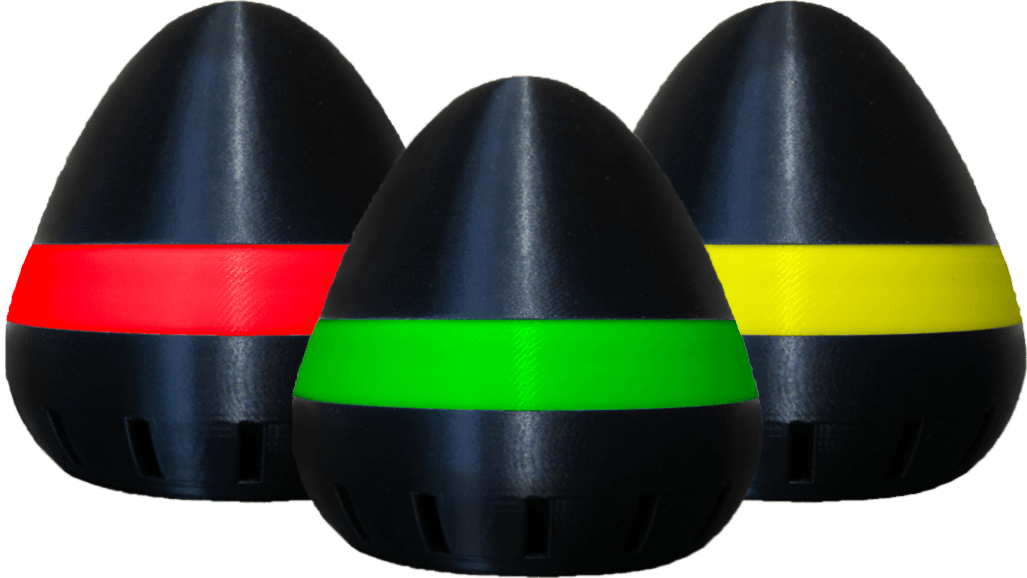AirPad
Subtotal: €34.99
WHY DO YOU NEED AN AIRPAD?
Ventilation is the process of exchanging indoor air with fresh outdoor air. Proper ventilation can also improve energy efficiency and enhance concentration throughout the day.
Having an AirPad at home is beneficial for several reasons:
PLUG IN AND GET STARTED
The AirPad measures the air quality in the surrounding environment using a built-in sensor. The current air quality level is displayed through color-coded indicators above the integrated LEDs. Simply plug the power adapter into an outlet, and the AirPad will begin its calibration process.
When is ventilation necessary?
The AirPad's color scheme is based on DIN 1946-6, a standard for ventilation in buildings, and the Pettenkofer curve, which provides historical guidelines for indoor air quality. These standards help ensure a healthy and comfortable environment.
Thanks to the 360° radiation, the light signal is clearly visible from all sides and can be positioned in various locations within the room. The color green indicates good air quality, and the AirPad can be placed near windows. If the color is yellow, open the windows and ventilate the room until the color changes to green. If the color turns red, all windows must be opened, as the air quality is very poor. Keep the windows open until the color changes to green. If the color hasn't changed after 5 minutes, leave the door open in addition to the open windows. If that doesn't help, leave the room and return in about 30 minutes. Monitor the AirPad to see if the color has changed. If it hasn’t, please contact us for further assistance.
TECHNICAL DATA
Downloads
| Title | Document Category | |
|---|---|---|
| AirPad Manual | Manual | Download |
